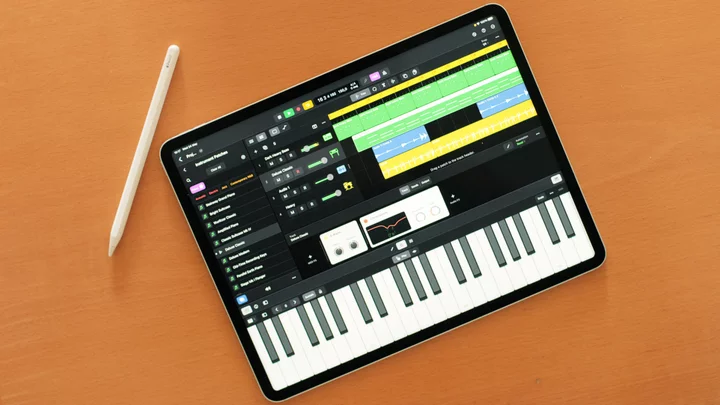
Twitter's rebrand is the next stage in Elon Musk's vision for the company. But does anyone want it?
Elon Musk's move over the weekend to rebrand Twitter and replace its iconic bird logo with an X is just the latest step in his effort to make over the billionaire's longtime favorite platform in his image.
2023-07-25 20:16

Nokia profit falls as North American slowdown dents margins
STOCKHOLM (Reuters) -Finnish telecom gear group Nokia on Thursday reported a drop in second-quarter profit due to a drop in
2023-07-20 13:47

The World’s 25 Most Popular Apps by Download
This list of the world’s most downloaded apps includes everything from TikTok to Candy Crush.
2023-11-24 01:27

Apple Logic Pro for iPad: Five cool new ways to make music
Apple's Logic Pro is an app that's permanently on my "learn how to use properly"
2023-06-02 17:48

Kai Cenat and IShowSpeed's address leak stream triggers overwhelming response as fans swarm to meet them: 'Security panicking'
Scores of fans converged at the leaked address to meet Kai Cenat and IShowSpeed
2023-07-01 19:47

TikTok rivals Twitter with new text format
TikTok, the social platform known for its addictive video content, announced Monday that it will offer text-only posts, becoming the latest tech giant to offer...
2023-07-25 03:16

West Virginia University approves $7M in staff cuts, 3% tuition increase
With more cuts expected, West Virginia University’s governing board moved forward Friday with slashing 12 graduate and doctoral programs amid a $45 million budget shortfall
2023-06-24 03:28

Star Wars: Knights of the Old Republic remake is reportedly still being developed
Games leaker Jason Schreier claims that the 'Star Wars: Knights of the Old Republic' game has not been cancelled.
2023-11-22 22:18

Elite Robots is coming back strong to Automatica with new top-of-the-line cobots and strategic partners
SHANGHAI--(BUSINESS WIRE)--Jun 19, 2023--
2023-06-20 09:27

Block out the noise with 17% off Bose QuietComfort headphones
Our top picks Best earbud deal Bose QuietComfort Earbuds II $249 at Amazon (save $50)
2023-07-29 00:26

What to stream this week: 'American Born Chinese,' John Wick,'SmartLess On the Road' and dinosaurs
This week’s new entertainment releases include an album from Matchbox Twenty, dinosaurs coming to life in the second season of “Prehistoric Planet” on Apple TV+ and the action-comedy series “American Born Chinese” on Disney+ with new Oscar winners Ke Huy Quan and Michele Yeoh
2023-05-22 12:27

Twitter down: App and website break after being hit by bizarre bug
Twitter has broken after seemingly being hit by an unusual bug. Some users were unable to log in or get online at all. But those who were could see something more strange: tweets displaying as if they were posted in 1970, and various posts refusing to load.
2023-10-26 21:53
You Might Like...

London Is Falling Down and It's Because of Climate Change

Thoma Bravo Extends Closing Date on ForgeRock Deal to Forestall Antitrust Review

SpaceX abandons YouTube for live streams of launches in favour of X/Twitter

Sony's PSVR 2 is marginally outselling the original headset

US Bets on Offshore Wind Boom in Oil-Rich Gulf of Mexico

Tesla finally lets you fully control windshield wipers from the steering wheel

The Best Phones for Kids in 2023

MSI Modern MD271UL Review
